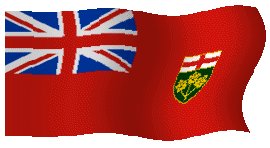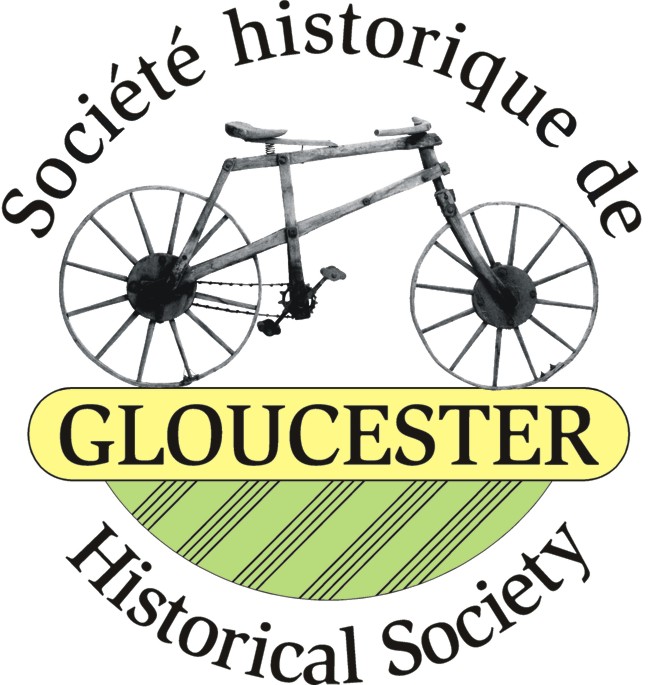|
1. Where was the first race track located in Gloucester?
a) between Bank Street and Bronson Avenue and north of the Rideau
Canal.
b) The present Rideau-Carleton Raceway was the first racetrack.
c) Near the intersection of Montreal Road and Shefford Road
d) Near the intersection of River Road and MacArthur Road
c) Near the intersection of Montreal
Road and Shefford Road. This was the location of the Dominion
Trotting Park during the 19th century. a) was also a location of
an early race track but was in Nepean Township in what is today
called The Glebe.
2. Where are the Bytown Bridges located?
a) at Hog's Back
b) at Green Island near Rideau Falls
c) an early name for Hurdman's Bridge
d) the official name of the St. Patrick Street Bridge.
b) at Green Island near Rideau
Falls
3. Thomas McKay was one of Gloucester's most famous residents.
Which of the following was he not involved in founding or building?
a) Hog's Back Locks
b) Beechwood Cemetery
c) The original Union Bridge near Chaudiere Falls
d) The Ottawa Locks adjacent to Parliament Hill
e) Rideau Hall
f) The Commissariat, the oldest surviving building in Ottawa and
now the Bytown Museum
g) Hartwell Locks
h) Colonel John By's home
b) Beechwood Cemetery.
This is Thomas McKay's burial place but the cemetery was actually
founded after his death in 1855.
4. Vanier was once known as Janeville. Who is Janeville
named after?
a) The daughter of Donald MacArthur
b) The wife of Charles Cummings
c) The daughter of Thomas McKay
d) The wife of Donald MacArthur
d) The wife of Donald MacArthur.
MacArthur Road in Vanier is named after Donald MacArthur.
5. Which of the following locations was not a tollgate?
a) Billings Bridge
b) Montreal Road at Green's Creek
c) Montreal Road at St. Laurent Blvd.
d) Bank Street at Conroy Rd.
e) Smyth Road at Russell Road
c) Montreal Road at St. Laurent
Blvd.
6. At one point, consideration was given to relocate the
St. Patrick Bridge. Where were they going to relocate it to?
a) to connect Smyth Road with Main Street.
b) to replace the wooden Billings Bridge
c) to become Hurdman's Bridge
d) to cross the Rideau River at Bronson Avenue.
d) to cross the Rideau River
at Bronson Avenue. The bridge relocation never took place.
7. Which of the following churches is the oldest church
building in the former Gloucester Township and still standing?
a) St. Bartholomew's Anglican Church, New Edinburgh
b) St. Joseph's Roman Catholic Church, Orleans
c) Our Lady of Visitation Roman Catholic Church, South Gloucester.
d) St. James' Anglican Church, Leitrim
e) South Gloucester United Church
c) Our Lady of Visitation Roman
Catholic Church, South Gloucester. This church building
opened in 1852 and the steeple was completed in 1854. St. Bartholomew's
opened in 1868. The present building of St. Joseph's opened in 1922.
St. James' opened in 1860 while the present building of South Gloucester
United Church (originally Presbyterian) opened in 1880.
8. Which bridge that linked Ottawa and Gloucester was not
built to accomodate streetcars?
a) Hurdman's Bridge
b) Cummings Bridge
c) Billings Bridge
d) St. Patrick Street Bridge
a) Hurdman's Bridge.
Of the bridges listed, streetcars actually only ran on the St. Patrick
Street Bridge but Billings Bridge and Cummings Bridge were designed
for streetcars. It had originally been planned to extend streetcars
across Billings Bridge to serve a railway station for the Canadian
Northern Railway adjacent to present day Billings Bridge Plaza.
The station was not built and consequently streetcars were not extended
beyond Bank Street and Grove Avenue in Ottawa South. In the case
of Cummings Bridge, streetcar rails were actually laid on the bridge
but streetcar service was refused by Eastview town council.
9. What was one of the names of the railway that connected
Carlsbad Springs to Ottawa?
a) The Ottawa and Morrisburgh Railway
b) The Canadian Northern Railway
c) The Canadian Pacific Railway
d) The Canada Atlantic Railway
e) The New York Central Railway
d) The Canada Atlantic Railway
10. Many early roads were known as 'corduroy' roads. What
did that mean?
a) This referred to roads that passed textile mills.
b) This was a type of road made of crushed stone named after Sir
James Corduroy.
c ) Early mud roads that had regular ruts during the dry season
resembling corduroy cloth.
d) Roads built with logs, which somewhat resembled corduroy cloth.
d) Roads built with logs, which
somewhat resembled corduroy cloth. The practice of laying
logs across the road was typically done in wet areas
11. What well known current location was the site of the
first Gloucester town meeting?
a) Rideau Hall
b) Billings Bridge
c) 24 Sussex Drive
d) MacDonald-Cartier International Airport
d) MacDonald-Cartier International
Airport. The first town meeting took place at Cunningham's
Inn in 1832 on the old Bowesville Road which is now part of the
airport.
12. Which name was never used for Bank Street in Gloucester?
a) Esther Street
b) King's Highway 31
c) Prescott Road
d) Metcalfe Road
e) Ottawa and Gloucester Road
a) Esther Street. This
street was named after Col. John By's wife and was in fact the original
name of Bank Street. At the time, Esther Street did not extend far
enough south to reach Gloucester. Bank Street in Gloucester during
the mid 1800s was part of the main carriage road to Prescott, hence
the name Prescott Road. Today's Old Prescott Road and Stagecoach
Road in Osgoode are continuations of that historic roadway.
13. Which church was blown down in a storm shortly after
it was built?
a) Leitrim Methodist Church
b) St. Thomas Aquinas Roman Catholic Church, Billings Bridge
c) Billings Bridge Methodist Church
d) St. Thomas the Apostle Anglican Church, Ellwood
b) St. Thomas Aquinas Roman Catholic
Church, Billings Bridge. This church was blown down in
a violent storm in June 1888. One child was killed. The church was
soon rebuilt on the same location and during the 1950s, a new church
building opened on Kilborn Avenue.
14. When Ottawa closed its Lowertown cemeteries, which
of the following Gloucester cemeteries were opened?
a) The United Jewish Cemetery
b) Beechwood Cemetery
c) Notre Dame Cemetery
d) all of the above
b) Beechwood Cemetery and c)
Notre Dame Cemetery
15. Which of the following community names is not associated
with Vanier?
a) Clarkstown
b) Village of Gloucester
c) Eastview
d) Clandeboye
e) Janeville
f) Cummings Bridge
b) Village of Gloucester.
This village is located adjacent to Vanier on Beechwood Avenue but
is now considered part of New Edinburgh. Clarkstown was the portion
of Vanier nearest Beechwood Avenue, while Clandeboye was situated
next to Notre Dame Cemetery and north of Montreal Road.
16. When the Rideau Centre was being built, where in Gloucester
was the excavation material dumped?
a) one of the Quarries along Montreal Road
b) one of the sand pits near Rideau-Carleton Raceway
c) at MacDonald-Cartier International Airport
d) near the Mer Bleue
a) one of the Quarries along
Montreal Road. There
had been a tragic drowning in 1979 and at that point it was decided
that the quarry needed to be filled in.
17. A subscription was started in the early days in order
to build the first Billings Bridge. Which of the following men were
not on the subscription list?
a) George Sparks
b) Hugh McKenna
c) Thomas Doxey
d) Braddish Billings
e) William Smyth
a) George Sparks. He
was an early resident of Janeville (now Vanier)
18. Which Prime Minister is said to have visited the mineral
springs and hotel at Carlsbad?
a) Sir Robert Borden
b) Sir Wilfred Laurier
c) Sir Alexander MacKenzie
d) Sir John A. MacDonald
d) Sir John A. MacDonald
19. Which was the earliest subdivision to be developed
in Gloucester?
a) Gateville
b) New Edinburgh
c) Billings Bridge
d) Janeville
e) Rockcliffe Park
b) New Edinburgh. New
Edinburgh began to be laid out in the 1830s by Thomas McKay as a
village for fellow Scotsmen who had worked on the construction of
the Rideau Canal. Billings Bridge is widely considered the first
village in the township but it wasn't more than a crossroads and
a few buildings until the first streets began to be laid out in
the 1870s at nearby Gateville. Long Island Village (next to Long
Island Locks) also dated to the 1830s but was abandoned by the 1870s
as development shifted to nearby Manotick after Dickinson's Grist
Mill opened.
20. How many Rideau Canal locks bordered Gloucester Township?
a) 1
b) 4
c) 6
d) 16
b) 4. This includes
the three locks at Long Island and one lock at Black Rapids. The
Hog's Back locks were fully within Nepean Township.
21. Why did the first railway to reach Bytown in 1854 enter
Lowertown instead of traveling to the lumber mills at Chaudiere
Falls?
a) The railway was designed to serve Ottawa's first population centre,
Lowertown
b) Ottawa's first industry was located at Rideau Falls
c) Thomas McKay, a resident of neighbouring New Edinburgh was a
major investor in the project.
d) There had been a major dispute between Thomas McKay and the Wright
family concerning the terminus of the railway.
e) The railway predated the lumber industry at Chaudiere Falls
c) Thomas McKay, a resident of
neighbouring New Edinburgh was a major investor in the project.
It is true that the
railway did serve Lowertown and Thomas McKay's industries at Rideau
Falls, but the routing was mainly influenced because of Thomas McKay's
financial involvement and his interests in the area of New Edinburgh.
Interestingly, Braddish Billings had also been involved in this
project and the railway was also routed directly past the Billings
estate. This self-serving route bypassing Ottawa's main industries
at Chaudiere Falls ended up being fatal as the railway went into
receivership in 1861. In 1871, a branch line to Chaudiere Falls
was built to correct this fatal flaw. This first railway connecting
Ottawa with Prescott was abandoned in pieces between the 1960s and
the 1990s but a short portion near Greenboro is still used by the
O-Train. It is likely that other portions of the right of way to
the south will also be used for the O-Train as it is extended in
the future.
22. Many Rideau River bridges were named after persons.
Associate the bridge name with the person's given name.
| a) Cummings Bridge |
a) Charles |
| b) Hurdman's Bridge |
b) Braddish |
| c) Dunbar Bridge |
c) The Earl of |
| d) Billings Bridge |
d) William Henry and Robert |
| e) Minto Bridge |
e) George |
a) a)
b) d)
c) e)
d) b)
e) c)
23. Where was the last Gloucester City Hall located?
a) Telesat Road
b) Bank Street at Leitrim
c) Ogilvie Road
d) Blair Road
a) Telesat
Road. The first
Township Hall was rented from Braddish Billings and was located
at Billings Bridge when township government was established in 1849.
A new brick Township Hall opened in 1874, opposite from today's
Billings Bridge Plaza on Bank Street. This remained the township
hall through city annexation in 1950 and until 1962. The township
hall was then relocated to 4550 Bank Street at Leitrim. With incorporation
in 1981, this became the first City Hall. In 1987, City Hall moved
to 1400 Blair Place near the Queensway in rented facilities. The
final location starting in 1998 was at 1595 Telesat Road, a short
distance from the previous location. The building was sold after
city amalgamation in 2001.
24. How many different bridges were situated at Hurdman's
Bridge?
a) 1
b) 2
c) 3
d) 4
e) 5
e) 5. The most northerly
bridge served the Canadian Northern Railway. This was followed by
the old Hurdman's Bridge used for regular traffic, then the Queensway
Bridge, then the Canadian Pacific Railway (CPR) bridge and finally
the Canadian National Railway bridge. Only the Queensway and CPR
bridge still exist and the latter is now used for pedestrians and
bicyclists only.
25. When was Bank Street south first paved through Gloucester?
a) 1910s
b) 1920s
c) 1930s
d) 1940s
e) 1950s
c) 1930s . Bank Street
was paved about the time it became King's Highway 31 in 1936.
26. Which location was never used to host the Gloucester
Fair?
a) Earl Armstrong Arena
b) near Billings Bridge
c ) Fred Barrett Arena
d) Rideau-Carleton Raceway
c ) Fred Barrett Arena.
The current version of the fair first ran at Earl Armstrong Arena
before moving to its present location at Rideau-Carleton Raceway.
There was an earlier version of the Gloucester Fair which was held
in the 19th century next to the township hall at Billings Bridge.
27. Which bridge was secretly and
temporarily renamed Bingham's Bridge to honour an Ottawa alderman?
a) Billings Bridge
b) Dunbar Bridge
c) Hurdman's Bridge
d) Cummings Bridge
d) Cummings Bridge.
This occurred around 1891 when a dispute arose between Gloucester
Township and Ottawa City Council over the construction of a new
bridge. When the new bridge opened, iron signs were installed with
the new name, and it was also secretly planned to rename Janeville
by the same name as the bridge. This only lasted a few days as Gloucester
residents took matters into their own hands and removed the signs
from the new bridge and tossed them into the river. The bridge reverted
to the original name, and it is still known by that name to this
day.
28. How many Drive-In Movie Theatres
existed in Gloucester?
a) 1
b) 2
c) 3
d) 4
d) 4. They were the
Aladdin Drive-In on Albion Road, the Airport Drive-In on Uplands
Drive, the Startop Drive-In on Cyrville Road and the Queensway Drive-In
located on Rainbow Street near Montreal Road and the Queensway.
The first Drive-In opened in the late 1940s and the last closed
in the 1990s.
29. Jeanne d'Arc Boulevard is a major
street in Orleans. Does this street name and the community name
have the same origins?
a) True
b) False
b) False. Any connection
between the two names is indirect at best. Jeanne d'Arc or Joan
of Arc was a heroine who led the French army to victory in Orléans,
France in 1428-1429, however the community name had actually originated
from the birthplace of early resident Théodore Besserer on
Ile d'Orléans, Québec.
30. Which of the following Gloucester
mansions were never owned by Thomas McKay's family?
a) The Castle
b) Gorffwysfa
c) Berkenfels
d) Rockcliffe Manor House
b) Gorffwysfa
is today's Prime Minister's residence at 24 Sussex Drive and built
by Joseph Merrill Currier.
The Castle is today known as Rideau Hall
and was Thomas McKay's residence. Berkenfels was built by Thomas
McKay Jr. Rockcliffe Manor House was the residence of Ann Crichton,
Thomas McKay's wife before her death and later the residence of
son-in-law and daughter, Thomas Coltrin & Anne Keefer. They
had previously resided at Berkenfels.
|
















